Summer 2025: A Comprehensive Guide to Face Sun-Kissed Days
Summer: Sun-Kissed Days

1 . Wisdom Behind the Summer :
- Summer embodies abundance and vitality. The Sun, at its zenith, fuels growth and energy.
- The Creator’s wisdom lies in providing warmth for crops to flourish and life to thrive.
2 . Summer Charming Beauties:
- Lotus flowers bloom in Asian ponds.
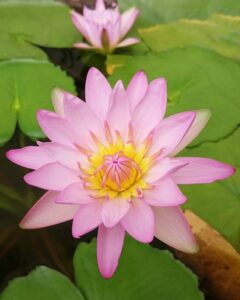
Lotus Flower - Sunflowers turn their faces toward the Sun.
- Fireflies dance in warm evenings.
3 . Utilities:
- Seasonal Harvesting: Rice, mangoes, lychees, and watermelons fill baskets.
- Fruits Ripening: Mangoes, pineapples, and durians reach their peak.
- Socio-Cultural Importance: Festivals like Obon in Japan honour ancestors and celebrate life.
4 . FAQs:
- Why are fireflies associated with summer nights?

A summer night in a natural reserve in Switzerland - Fireflies’ bioluminescence symbolizes hope and fleeting magic. Their glow reminds us to cherish the present.
- What’s the significance of rice during summer?
- Rice sustains millions and represents community, unity, and prosperity.
Summer, with its longer days and warmer temperatures, significantly influences our well-being in various ways. Let’s explore how it impacts our working capacity and overall health:
5 . Physical Health in Summer:
- Physical Health in Summer:
- Heat Stress: High temperatures during summer can lead to heat stress. Prolonged exposure to heat affects our cardiovascular system, leading to fatigue, dehydration, and heat-related illnesses.
- Hydration: Staying hydrated is crucial. Sweating increases, and we lose more fluids. Proper hydration supports physical endurance and prevents heat-related issues.
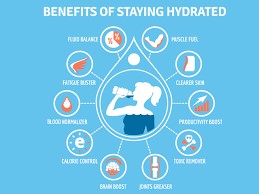
- Exercise: Summer encourages outdoor activities. Regular exercise improves cardiovascular health, muscle strength, and overall fitness. However, be cautious during extreme heat.
 Mental Health:
Mental Health:
- Seasonal Affective Factors: While Seasonal Affective Disorder (SAD) is typically associated with winter, some individuals experience mood changes during summer. Heat and humidity can affect sleep patterns and mood.
- Sleep Disturbances: Longer daylight hours can disrupt sleep. Ensure a cool, dark bedroom for quality rest.

Enough Sleep - Work-Life Balance: Longer days may lead to extended work hours. Balancing work and personal life becomes essential to prevent burnout.
- Psychological Well-Being:
- Sunshine and Mood: Sunlight boosts serotonin levels, positively impacting mood and mental well-being.
- Vacations and Relaxation: Many people take summer vacations. Time off allows relaxation, reducing stress and enhancing psychological resilience.
- Social Connections: Summer gatherings, barbecues, and outdoor events foster social connections, which are vital for mental health.
- Working Capacity:
- Productivity Challenges: Heat can reduce concentration and cognitive function. Overheated workspaces affect productivity.
- Flexible Work Arrangements: Remote work during summer (especially in air-conditioned environments) can enhance productivity and well-being12.
Stay cool, hydrated, and mindful of your well-being during the sunny season.
You can explore resources like the World Health Organization’s fact sheet on mental health at work for more detailed information.
Beating the heat and maintaining focus at work is essential for productivity and well-being, especially during hot weather. Let’s explore some practical strategies:
6 . Heat Safety Tips:
-
- If you work outdoors, follow these heat safety tips to stay healthy and focused:
- Wear light-coloured and lightweight clothing: Opt for shades like white, grey, or pastels. Darker colours absorb more heat, so lighter clothing keeps you cooler1.
- Stay hydrated: Drink plenty of water before and during work. Dehydration affects focus and overall well-being.

- Take frequent breaks: Shorten work intervals and rest in shaded or air-conditioned areas. Use a timer to track your concentration time1.
- Limit distractions: Create a focused workspace by turning off the TV, silencing notifications, and avoiding social media2.
- Use sunblock: Protect your skin from sun exposure. Apply sunscreen with at least SPF 15 and reapply every two hours3.
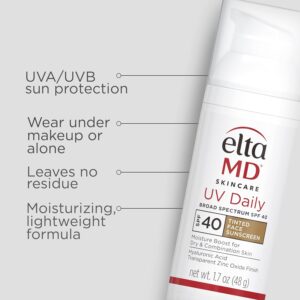
Face Sunscreen https://a.co/d/dT5w2fe - Cover up: Wear a long-sleeve shirt and a hat to prevent direct sun exposure3.
- Avoid alcohol and excessive caffeine: These can dehydrate you and affect focus3.
- Use a damp rag: Wipe your face or place it around your neck to cool down1.
- Know the signs of heat-related illness: Recognize symptoms like muscle cramps, fatigue, dizziness, and rapid pulse. Heat exhaustion and heat stroke require immediate attention.
- If you work outdoors, follow these heat safety tips to stay healthy and focused:
7 . Focus Improvement Techniques:
-
-
-
- Beyond heat-related strategies, consider these tips to enhance your focus:
- Meditation and mindfulness: Spend a few minutes meditating in a calm, quiet place before starting work. Mindfulness practices improve concentration2.
- Read a book: Reading outside of work helps train your brain to focus on a single task. It enhances cognitive abilities and creativity2.
- Get enough sleep: Quality sleep directly impacts focus and cognitive function. Aim for 7-8 hours each night4.
- Listen to music: Some people find instrumental music or ambient sounds helpful for concentration. Experiment to see what works for you.
- Pay attention to nutrition: Balanced meals with whole grains, fruits, and vegetables support brain health. Avoid excessive sugar and processed foods2.
- Beyond heat-related strategies, consider these tips to enhance your focus:
-
-
Remember, staying cool and maintaining focus go hand in hand. Prioritize self-care and create an environment conducive to productivity.1324
Creating a comfortable workspace during hot weather is essential for maintaining productivity and well-being. Here are some practical tips to help you beat the heat and stay focused:
8 . Optimize Your Workspace Temperature:
-
- Ideal Office Temperature: According to OSHA, the ideal office temperature should be between 68°F and 76°F with humidity in the 20%–60% range12.
- Adjust Air Conditioning: If you control the thermostat, set it within this range. Ensure proper ventilation and air circulation.
- Use Fans: Position fans strategically to create airflow. Ceiling fans or desk fans can help cool down your workspace.
- Avoid Direct Sunlight: Place your desk away from direct sunlight. Use blinds or curtains to block intense sunlight.
- Stay Hydrated: Keep a water bottle nearby to combat dehydration caused by heat.
- Choose Comfortable Clothing:
- Lightweight Fabrics: Opt for lightweight, breathable clothing made from natural fibres like cotton or linen. These materials allow better airflow and keep you cool.
- Avoid Dark Colors: Dark colours absorb heat. Choose light, reflective colours that deflect sunlight.
- Moisture-Wicking Fabrics: Consider wearing moisture-wicking fabrics that draw sweat away from your skin.
- Ergonomic Considerations:
- Comfortable Seating: Ensure your chair provides proper support and comfort. Adjust the height and backrest to maintain good posture.
- Standing Desks: If possible, use a standing desk. It encourages movement and reduces heat buildup.
- Cosy Lighting: Use warm, ambient lighting to create a comfortable atmosphere. Avoid harsh, bright lights.
- Flooring Solutions: Opt for warm flooring solutions like carpets, area rugs, or heated floors. They provide insulation and create a cozy environment3.
- Personal Comfort:
- Bring in a Fan or Space Heater: If your workspace lacks proper temperature control, consider using a fan or space heater. Discuss with colleagues to find collaborative solutions.
- Stay Hydrated: Keep a water bottle handy and sip water throughout the day.
- Dress in Layers: Lightweight layers allow you to adjust your clothing based on your comfort level.
- Take Breaks: Step outside or find a cooler area during breaks to refresh yourself.
Remember, a comfortable workspace contributes to better focus, productivity, and overall well-being. Stay cool and stay productive! 145
Improving the air quality in your workspace is essential for your well-being and productivity. Here are some natural ways to freshen up the air without relying on chemicals:
- Open Windows and Doors:
- Whenever possible, open windows and doors to allow fresh outdoor air to circulate. This simple step can significantly improve indoor air quality12.
- Use Fans:
- Ceiling fans or portable fans help create airflow within the room. Position them strategically to enhance circulation.
- Fans also help distribute cool air during hot weather and prevent stagnant air3.
- Make Your Air Fresheners:
- Reed Diffuser Oil:
- Create your reed diffuser oil by adding a few drops of your favourite essential oil (such as lavender, tea tree, or eucalyptus) to a small glass bottle filled with a carrier oil (like baby oil or almond oil).
- Place rattan diffuser sticks inside the bottle to disperse the fragrance throughout the room.
- Remember to keep essential oils out of reach of small children and pets4.
- Lavender Room Spray:
- Fill a small spray bottle with equal parts distilled water and rubbing alcohol (1 oz. each).
- Add 10-20 drops of lavender essential oil (adjust the strength based on your preference).
- Shake the bottle well to evenly disperse the oils.
- Spray the lavender mist around your workspace for a calming and fresh scent4.
- Reed Diffuser Oil:
- Maintain Cleanliness:
- Regularly vacuum, dust, and sanitize your workspace.
- Clear away clutter and promptly dispose of garbage to prevent stale air2.
- Position Furniture for Airflow:
- Arrange your furniture layout to optimize airflow. Ensure fresh air reaches each workstation.
- Avoid blocking air vents or grilles3.
Remember, a well-ventilated workspace contributes to your comfort and focus. These natural hacks will help you create a pleasant and invigorating environment. 4312
Reduce humidity indoors without using a dehumidifier, here are some natural and effective strategies:
- Open Windows or Doors Regularly:
- Even during colder months, it’s essential to ventilate your home. Stagnant air can lead to condensation on windows and surfaces, promoting mold growth.
- Crack open windows or doors a few times a week to let in fresh air and prevent moisture buildup. If it’s freezing outside, consider leaving internal doors open to allow excess moisture to disperse between rooms12.
- Turn on the Air Conditioner (AC):
- While it may seem counterproductive during winter, cooling the air with an AC has several benefits:
- It removes moisture from the air.
- It helps circulate air throughout your home.
- Both of these factors contribute to reducing humidity, condensation, and mold growth1.
- While it may seem counterproductive during winter, cooling the air with an AC has several benefits:
- Fix Water Leaks Promptly:
- Leaking pipes, faucets, or roofs can introduce excess moisture into your home. Regularly inspect and fix any leaks to prevent humidity buildup2.
- Use Exhaust/Ventilation Fans:
- Bathroom fans and kitchen range hoods are excellent for removing humid air generated during showers, cooking, or dishwashing.
- Ensure these fans are functioning properly and use them actively2.
- Dry Your Laundry Outside:
- Instead of drying laundry indoors, take advantage of sunny days and hang clothes outside. This prevents excess moisture from evaporating into your home2.
- Keep Gutters Clean:
- Clogged gutters can lead to water accumulation near your home’s foundation. Ensure they are clear to prevent excess moisture from seeping indoors2.
- Move House Plants Outside:
- While houseplants are lovely, they release moisture through a process called transpiration. Consider moving them outdoors during humid periods or limiting the number of plants indoors2.
Remember, maintaining proper humidity levels contributes to a healthier and more comfortable living environment. These natural methods can help you achieve that balance. 12
Summer calls for refreshing and hydrating foods that help you beat the heat while meeting your health requirements. Here are some recommended summer foods to keep you cool and nourished:
- Watermelon:

Watermelon - Watermelon is a hydration superstar! It’s 92% water and contains skin-protecting lycopene. Enjoy it as a juicy snack or blend it into a refreshing smoothie1.
- Cucumbers:
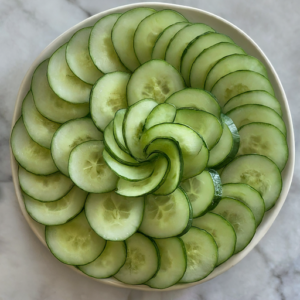
Cucumbers - Cucumbers are over 95% water, making them excellent for hydration. Slice them up for a crunchy snack, add them to salads, or infuse your water with cucumber and orange slices2.
- Coconut Water:
- Coconut water, extracted from the inside of coconuts, is a natural rehydration drink. It contains 94%–95% water and provides potassium and sodium. Perfect for post-exercise rehydration2.
- Buttermilk:
- In Subcontinent, buttermilk is a popular drink to cool the body during hot weather. It contains 90% water and is a refreshing choice to beat the heat2.
- Zucchini (Summer Squash):
- Zucchini is hydrating and versatile. Use it in cold salads or grill it to avoid heating your kitchen. It’s a low-calorie option packed with nutrients3.
- Berries (Strawberries, Blueberries, Raspberries):
- Berries are not only delicious but also hydrating. They’re rich in antioxidants, vitamins, and fibre. Add them to yogurt, or salads, or enjoy them as a snack1.
- Leafy Greens (Spinach, Lettuce):
- Leafy greens are hydrating and provide essential nutrients. Make refreshing salads or add them to wraps and sandwiches1.
- Mint:
- Fresh mint adds flavour and a cooling sensation. Use it in fruit salads, and smoothies, or infuse it in water for a refreshing twist3.
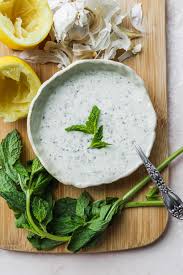
Mint Yogurt Sauce
- Fresh mint adds flavour and a cooling sensation. Use it in fruit salads, and smoothies, or infuse it in water for a refreshing twist3.
Remember to stay hydrated, choose light meals, and enjoy these seasonal foods to keep your energy up and your body cool during the hot summer days! 231
Summer is the perfect time to enjoy fresh, light, and nutritious meals. Here are some healthy summer recipes to tantalize your taste buds:
- Summer Salad by the Lake:
- This hearty salad combines earthy flavours with sweet freshness. It’s loaded with good stuff like melon, tomatoes, and zucchini. Perfect for a lakeside picnic or any summer gathering1.
- Farmers Market Street Tacos:
- Use whatever fresh veggies are in season at your local farmer’s market to create these delicious street tacos. They’re customizable, colourful, and bursting with flavor1.
- Prosciutto Shrimp with Tropical Mango Salsa:
- Take the classic prosciutto and melon pairing to the next level by adding an assortment of tropical fruits like mango, pineapple, and papaya. Top it off with succulent shrimp for a tasty starter1.
- Triple Tomato Flatbread:
- Show off your garden’s plum, sun-dried, and cherry tomatoes with this easy flatbread recipe. It’s a delightful way to enjoy the season’s bounty and impress your guests1.
- Spicy Fresh Tomato and Eggplant Sauce:
- Capture the flavours of the old country with this heartwarming tomato and eggplant sauce. It’s perfect for pasta, freezes well, and can stand on its own or be paired with meat or Parmesan1.
- Low-Carb Shrimp Sushi Bowl:
- Ready in under 30 minutes, this low-carb bowl is packed with vegetables and features shrimp. If you’re not a shrimp fan, feel free to substitute cooked shredded chicken or firm tofu1.
- Greek Ouzo Pork Kabobs:
- Transport yourself to the Greek islands with these delightful kabobs. The ouzo (an anise-flavored liqueur) and tzatziki dipping sauce add an authentic Mediterranean touch1.
- Cilantro-Topped Salmon:
- This cilantro-lime salmon is a favourite for everyone who tries it. The fresh cilantro-lime sauce complements tender salmon fillets, creating a flavorful and healthy dish1.
Remember to use seasonal ingredients and experiment with flavours to create your healthy summer masterpieces! 1
Disclaimer: The contents of this article are intended to raise awareness about common health issues and should not be viewed as sound medical advice for your specific condition. You should always consult with a licensed medical practitioner before following any suggestions outlined in this article or adopting any treatment protocol based on the article’s contents.
The Revival of 90s Fashion: Interesting Iconic Trends Making a Comeback

